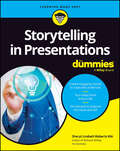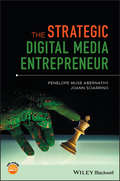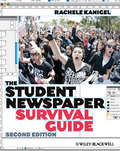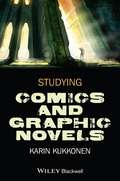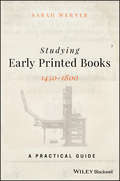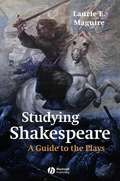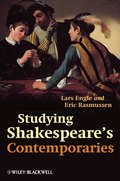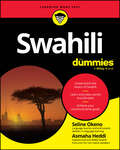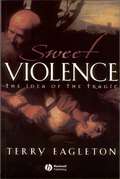- Table View
- List View
Storytelling in Presentations For Dummies
by Sheryl Lindsell-RobertsLearn to influence audiences with storyopia: Stories that take them on a journey from what is to what could be: Storytelling in Presentations For Dummies shows you how to develop and deliver a presentation through storytelling, keeping audience interested, and most importantly, making them heroes that take action towards change. You’ll learn how to cull stories from your own experiences, and before you know it, you’ll have more stories than Aesop has fables. You’ll learn about the latest presentation software, so you can integrate visuals into your presentations and avoid the dreaded “Death by PowerPoint.” You’ll also learn how to deal with challenging on-the-spot situations, deliver investor pitches and executive briefs, and present a paper at a conference. Additionally, find out how to deliver someone else’s content and make it your own. This book will help you level up anywhere you need to present information by mastering the art of savvy presentations—the most effective business communications tools of our time. Identify experiences that can be molded into stories that drive change. Prepare powerful openings to hook your audience right away whether delivering in person, online, or hybrid Have your audience get the most from your presentation with an effective call to action Prepare a storyboard, which is like a frame-by-frame roadmap, that will mesh together what you’ll show and what you’ll tell Leverage software like Canva, Prezi, and Storyboarder to tie your presentation together Enjoy the colorful 8-page mini-booklet, “Storytelling to Storyboarding”This Dummies guide is perfect for any professional who needs to present, and at some time all professionals do. It’s also for entrepreneurs who want to build community and grow their business, in addition to students who want to wow teachers and classmates.
Storytelling in Presentations For Dummies
by Sheryl Lindsell-RobertsLearn to influence audiences with storyopia: Stories that take them on a journey from what is to what could be: Storytelling in Presentations For Dummies shows you how to develop and deliver a presentation through storytelling, keeping audience interested, and most importantly, making them heroes that take action towards change. You’ll learn how to cull stories from your own experiences, and before you know it, you’ll have more stories than Aesop has fables. You’ll learn about the latest presentation software, so you can integrate visuals into your presentations and avoid the dreaded “Death by PowerPoint.” You’ll also learn how to deal with challenging on-the-spot situations, deliver investor pitches and executive briefs, and present a paper at a conference. Additionally, find out how to deliver someone else’s content and make it your own. This book will help you level up anywhere you need to present information by mastering the art of savvy presentations—the most effective business communications tools of our time. Identify experiences that can be molded into stories that drive change. Prepare powerful openings to hook your audience right away whether delivering in person, online, or hybrid Have your audience get the most from your presentation with an effective call to action Prepare a storyboard, which is like a frame-by-frame roadmap, that will mesh together what you’ll show and what you’ll tell Leverage software like Canva, Prezi, and Storyboarder to tie your presentation together Enjoy the colorful 8-page mini-booklet, “Storytelling to Storyboarding”This Dummies guide is perfect for any professional who needs to present, and at some time all professionals do. It’s also for entrepreneurs who want to build community and grow their business, in addition to students who want to wow teachers and classmates.
The Strange Non-death of Neo-liberalism
by Colin CrouchThe financial crisis seemed to present a fundamental challenge to neo liberalism, the body of ideas that have constituted the political orthodoxy of most advanced economies in recent decades. Colin Crouch argues in this book that it will shrug off this challenge. The reason is that while neo liberalism seems to be about free markets, in practice it is concerned with the dominance over public life of the giant corporation. This has been intensified, not checked, by the recent financial crisis and acceptance that certain financial corporations are ‘too big to fail'. Although much political debate remains preoccupied with conflicts between the market and the state, the impact of the corporation on both these is today far more important. Several factors have brought us to this situation: The lobbying power of firms whose donations are of growing importance to cash-hungry politicians and parties The weakening of competitive forces by firms large enough to shape and dominate their markets The moral initiative that is grasped by enterprises that devise their own agendas of corporate social responsibility Both democratic politics and the free market are weakened by these processes, but they are largely inevitable and not always malign. Hope for the future, therefore, cannot lie in suppressing them in order to attain either an economy of pure markets or a socialist society. Rather it lies in dragging the giant corporation fully into political controversy.
The Strange Non-death of Neo-liberalism
by Colin CrouchThe financial crisis seemed to present a fundamental challenge to neo liberalism, the body of ideas that have constituted the political orthodoxy of most advanced economies in recent decades. Colin Crouch argues in this book that it will shrug off this challenge. The reason is that while neo liberalism seems to be about free markets, in practice it is concerned with the dominance over public life of the giant corporation. This has been intensified, not checked, by the recent financial crisis and acceptance that certain financial corporations are ‘too big to fail'. Although much political debate remains preoccupied with conflicts between the market and the state, the impact of the corporation on both these is today far more important. Several factors have brought us to this situation: The lobbying power of firms whose donations are of growing importance to cash-hungry politicians and parties The weakening of competitive forces by firms large enough to shape and dominate their markets The moral initiative that is grasped by enterprises that devise their own agendas of corporate social responsibility Both democratic politics and the free market are weakened by these processes, but they are largely inevitable and not always malign. Hope for the future, therefore, cannot lie in suppressing them in order to attain either an economy of pure markets or a socialist society. Rather it lies in dragging the giant corporation fully into political controversy.
Strategic Communication Theory and Practice: The Cocreational Model
by Carl H. BotanA guide to strategic communication that can be applied across a range of subfields at all three levels—grand strategic, strategic, and tactical communication Communication is a core function of every human organization so when you work with communication you are working with the very core of the organization. Written for students, academics, and professionals, Strategic Communication Theory and Practice: The Cocreational Model argues for a single unified field of strategic communication based in the three large core subfields of public relations, marketing communication, and health communication, as well as strategic communicators working in many other subfields such as political communication, issues management, crisis communication, risk communication, environmental and science communication, social movements, counter terrorism communication, public diplomacy, public safety and disaster management, and others. Strategic Communication Theory and Practice is built around a cocreational model that shifts the focus from organizational needs and the messages crafted to achieve them, to a publics-centered view placing publics and their ability to cocreate new meanings squarely in the center of strategic communication theory and practice. The author—a noted expert in the field—outlines the theories, campaign strategies, common issues, and cutting edge challenges facing strategic communication, including the role of social media, ethics, and intercultural strategic communication. As the author explains, the term "strategic communication" properly refers only to the planned campaigns that grow out of research and understanding what publics think and want. This vital resource answers the questions of whether, and how, strategic-level skills can be used across fields, as it: Explores the role of theory and the cocreational meta-theory in strategic communication Outlines ethical practices and problems in the field Includes information on basic campaign strategies Offers the most recent information on risk communication, preparedness and terrorism communication, and employment in strategic communication Redefines major concepts, such as publics, from a cocreational perspective
Strategic Communication Theory and Practice: The Cocreational Model
by Carl H. BotanA guide to strategic communication that can be applied across a range of subfields at all three levels—grand strategic, strategic, and tactical communication Communication is a core function of every human organization so when you work with communication you are working with the very core of the organization. Written for students, academics, and professionals, Strategic Communication Theory and Practice: The Cocreational Model argues for a single unified field of strategic communication based in the three large core subfields of public relations, marketing communication, and health communication, as well as strategic communicators working in many other subfields such as political communication, issues management, crisis communication, risk communication, environmental and science communication, social movements, counter terrorism communication, public diplomacy, public safety and disaster management, and others. Strategic Communication Theory and Practice is built around a cocreational model that shifts the focus from organizational needs and the messages crafted to achieve them, to a publics-centered view placing publics and their ability to cocreate new meanings squarely in the center of strategic communication theory and practice. The author—a noted expert in the field—outlines the theories, campaign strategies, common issues, and cutting edge challenges facing strategic communication, including the role of social media, ethics, and intercultural strategic communication. As the author explains, the term "strategic communication" properly refers only to the planned campaigns that grow out of research and understanding what publics think and want. This vital resource answers the questions of whether, and how, strategic-level skills can be used across fields, as it: Explores the role of theory and the cocreational meta-theory in strategic communication Outlines ethical practices and problems in the field Includes information on basic campaign strategies Offers the most recent information on risk communication, preparedness and terrorism communication, and employment in strategic communication Redefines major concepts, such as publics, from a cocreational perspective
The Strategic Digital Media Entrepreneur
by Penelope M. Abernathy JoAnn SciarrinoA goldmine of strategic insights and practical business guidance covering all aspects of media entrepreneurship in the Digital Age The media industry is facing epic upheaval. Revolutionary new technologies compel those in businesses as diverse as broadcasting to book publishing to radically recreate their business models or be left in history’s wake. At the same time, those with the next big idea are eager to acquire the business know-how needed to make it in today’s brave new world of media. Written by a uniquely well-qualified author team, this book addresses the concerns of both audiences. Penelope Muse Abernathy and JoAnn Sciarrino provide timely lessons on everything from media financing to marketing, business strategy to leadership, innovation to business accounting. They use numerous case studies and real-world vignettes to reveal the success secrets of today’s hottest media entrepreneurs, as well as the fatal flaws that leads many promising new ventures down the road to ruin. They begin with a primer on digital entrepreneurship basics, covering how to create a winning digital business model, obtain financing, do business accounting, identify strategic challenges, and more. From there they show you how to: Develop sustainable customer-focused strategies while overcoming the unique leadership challenges of the Digital Age Define your company’s unique value proposition, prioritize investments in key assets, and form strategic partnerships and alliances Understand and prepare to exploit the vast potential inherent in the next generation of digital technologies, including artificial intelligence, virtual reality, and blockchain, among others The two companion websites feature a wealth of supplemental material, including updates, instructional videos, essays by media leaders, as well as PowerPoint presentations and study guides for instructors. Packed with practical insights and guidance on all aspects of the business of media in the Digital Age, The Strategic Digital Media Entrepreneur is a must-have resource for professionals and students alike in advertising, marketing, business strategy, entrepreneurship, finance, social media, and more.
Strategic Organizational Communication: In a Global Economy
by Charles Conrad Marshall Scott PooleSurveying a wide variety of disciplines, this fully-revised 7th edition offers a sophisticated and engaging treatment of the rapidly expanding field of organizational communication Places organizations and organizational communication within a broader social, economic, and cultural context Applies a global perspective throughout, including thoughtful consideration of non-Western forms of leadership, as well as global economic contexts Offers a level of sophistication and integration of ideas from a variety of disciplines that makes this treatment definitive Updated in the seventh edition: Coverage of recent events and their ethical dimensions, including the bank crisis and bailouts in the US and UK Offers a nuanced, in-depth discussion of technology, and a new chapter on organizational change Includes new and revised case studies for a fresh view on perennial topics, incorporating a global focus throughout Online Instructors' Manual, including sample syllabi, tips for using the case studies, test questions, and supplemental case studies
Strategic Organizational Communication: In a Global Economy
by Charles Conrad Marshall Scott PooleSurveying a wide variety of disciplines, this fully-revised 7th edition offers a sophisticated and engaging treatment of the rapidly expanding field of organizational communication Places organizations and organizational communication within a broader social, economic, and cultural context Applies a global perspective throughout, including thoughtful consideration of non-Western forms of leadership, as well as global economic contexts Offers a level of sophistication and integration of ideas from a variety of disciplines that makes this treatment definitive Updated in the seventh edition: Coverage of recent events and their ethical dimensions, including the bank crisis and bailouts in the US and UK Offers a nuanced, in-depth discussion of technology, and a new chapter on organizational change Includes new and revised case studies for a fresh view on perennial topics, incorporating a global focus throughout Online Instructors' Manual, including sample syllabi, tips for using the case studies, test questions, and supplemental case studies
Structuralism
by John SturrockJohn Sturrock’s classic explication of Structuralism represents the most succinct and balanced survey available of a major critical movement associated with the thought of such key figures as Lévi-Strauss, Foucault, Barthes, Lacan and Althusser theory. A classic work in literary and cultural theory. Reissued to coincide with calls for a return to structuralism. Includes a new introduction by Jean-Michel Rabaté, which explores developments in the reception of structuralist theory in the past five to ten years.
Structuring Events: A Study in the Semantics of Lexical Aspect (Explorations in Semantics #5)
by Susan RothsteinStructuring Events presents a novel semantic theory of lexical aspect for anyone interested in the study of verb meanings. Provides an introduction to aspectual classes and aspectual distinctions. Utilizes case studies to present a novel semantic theory of lexical aspect and compare it with alternative theories. Useful for students and scholars in semantics and syntax as well as the neighboring fields of pragmatics and philosophy of language.
The Student Newspaper Survival Guide
by Rachele KanigelThe Student Newspaper Survival Guide has been extensively updated to cover recent developments in online publishing, social media, mobile journalism, and multimedia storytelling; at the same time, it continues to serve as an essential reference on all aspects of producing a student publication. Updated and expanded to discuss many of the changes in the field of journalism and in college newspapers, with two new chapters to enhance the focus on online journalism and technology Emphasis on Web-first publishing and covering breaking news as it happens, including a new section on mobile journalism Guides student journalists through the intricate, multi-step process of producing a student newspaper including the challenges of reporting, writing, editing, designing, and publishing campus newspapers and websites Chapters include discussion questions, exercises, sample projects, checklists, tips from professionals, sample forms, story ideas, and scenarios for discussion Fresh, new, full color examples from award winning college newspapers around North America Essential reading for student reporters, editors, page designers, photographers, webmasters, and advertising sales representatives
The Student Newspaper Survival Guide
by Rachele KanigelThe Student Newspaper Survival Guide has been extensively updated to cover recent developments in online publishing, social media, mobile journalism, and multimedia storytelling; at the same time, it continues to serve as an essential reference on all aspects of producing a student publication. Updated and expanded to discuss many of the changes in the field of journalism and in college newspapers, with two new chapters to enhance the focus on online journalism and technology Emphasis on Web-first publishing and covering breaking news as it happens, including a new section on mobile journalism Guides student journalists through the intricate, multi-step process of producing a student newspaper including the challenges of reporting, writing, editing, designing, and publishing campus newspapers and websites Chapters include discussion questions, exercises, sample projects, checklists, tips from professionals, sample forms, story ideas, and scenarios for discussion Fresh, new, full color examples from award winning college newspapers around North America Essential reading for student reporters, editors, page designers, photographers, webmasters, and advertising sales representatives
A Student's Commentary on Ovid's Metamorphoses Book 10
by Shawn O'BryhimDiscover a holistic perspective on Ovid’s Metamorphoses Book 10 with this insightful resource. In A Student’s Commentary on Ovid’s Metamorphoses Book 10, Shawn O’Bryhim offers an insightful and concise examination of the literary, grammatical, and textual matters integral to Book 10 of Ovid’s Metamorphoses. Expanding the scope of more traditional textbooks on Book 10, the author explores the archaeological, religious, and cultural elements of the work as it relates to Greece, Rome, and the Near East. Readers will benefit from the inclusion of: A multidisciplinary approach that examines the religious, archaeological, and cultural background of Ovid’s myths A Near Eastern perspective on the material, which will allow a deeper understanding of the subject matter An exploration of the grammatical and literary components that characterize Book 10 Intended primarily for undergraduates in advanced Latin courses on Ovid, A Student’s Commentary on Ovid’s Metamorphoses Book 10 will also earn a place in the library of anyone who desires a broader approach to the study of Book 10 of the Metamorphoses.
A Student's Commentary on Ovid's Metamorphoses Book 10
by Shawn O'BryhimDiscover a holistic perspective on Ovid’s Metamorphoses Book 10 with this insightful resource. In A Student’s Commentary on Ovid’s Metamorphoses Book 10, Shawn O’Bryhim offers an insightful and concise examination of the literary, grammatical, and textual matters integral to Book 10 of Ovid’s Metamorphoses. Expanding the scope of more traditional textbooks on Book 10, the author explores the archaeological, religious, and cultural elements of the work as it relates to Greece, Rome, and the Near East. Readers will benefit from the inclusion of: A multidisciplinary approach that examines the religious, archaeological, and cultural background of Ovid’s myths A Near Eastern perspective on the material, which will allow a deeper understanding of the subject matter An exploration of the grammatical and literary components that characterize Book 10 Intended primarily for undergraduates in advanced Latin courses on Ovid, A Student’s Commentary on Ovid’s Metamorphoses Book 10 will also earn a place in the library of anyone who desires a broader approach to the study of Book 10 of the Metamorphoses.
Studying Comics and Graphic Novels
by Karin KukkonenThis introduction to studying comics and graphic novels is a structured guide to a popular topic. It deploys new cognitive methods of textual analysis and features activities and exercises throughout. Deploys novel cognitive approaches to analyze the importance of psychological and physical aspects of reader experience Carefully structured to build a sequenced, rounded introduction to the subject Includes study activities, writing exercises, and essay topics throughout Dedicated chapters cover popular sub-genres such as autobiography and literary adaptation
Studying Comics and Graphic Novels
by Karin KukkonenThis introduction to studying comics and graphic novels is a structured guide to a popular topic. It deploys new cognitive methods of textual analysis and features activities and exercises throughout. Deploys novel cognitive approaches to analyze the importance of psychological and physical aspects of reader experience Carefully structured to build a sequenced, rounded introduction to the subject Includes study activities, writing exercises, and essay topics throughout Dedicated chapters cover popular sub-genres such as autobiography and literary adaptation
Studying Early Printed Books, 1450-1800: A Practical Guide
by Sarah WernerA comprehensive resource to understanding the hand-press printing of early books Studying Early Printed Books, 1450 - 1800 offers a guide to the fascinating process of how books were printed in the first centuries of the press and shows how the mechanics of making books shapes how we read and understand them. The author offers an insightful overview of how books were made in the hand-press period and then includes an in-depth review of the specific aspects of the printing process. She addresses questions such as: How was paper made? What were different book formats? How did the press work? In addition, the text is filled with illustrative examples that demonstrate how understanding the early processes can be helpful to today’s researchers. Studying Early Printed Books shows the connections between the material form of a book (what it looks like and how it was made), how a book conveys its meaning and how it is used by readers. The author helps readers navigate books by explaining how to tell which parts of a book are the result of early printing practices and which are a result of later changes. The text also offers guidance on: how to approach a book; how to read a catalog record; the difference between using digital facsimiles and books in-hand. This important guide: Reveals how books were made with the advent of the printing press and how they are understood today Offers information on how to use digital reproductions of early printed books as well as how to work in a rare books library Contains a useful glossary and a detailed list of recommended readings Includes a companion website for further research Written for students of book history, materiality of text and history of information, Studying Early Printed Books explores the many aspects of the early printing process of books and explains how their form is understood today.
Studying Early Printed Books, 1450-1800: A Practical Guide
by Sarah WernerA comprehensive resource to understanding the hand-press printing of early books Studying Early Printed Books, 1450 - 1800 offers a guide to the fascinating process of how books were printed in the first centuries of the press and shows how the mechanics of making books shapes how we read and understand them. The author offers an insightful overview of how books were made in the hand-press period and then includes an in-depth review of the specific aspects of the printing process. She addresses questions such as: How was paper made? What were different book formats? How did the press work? In addition, the text is filled with illustrative examples that demonstrate how understanding the early processes can be helpful to today’s researchers. Studying Early Printed Books shows the connections between the material form of a book (what it looks like and how it was made), how a book conveys its meaning and how it is used by readers. The author helps readers navigate books by explaining how to tell which parts of a book are the result of early printing practices and which are a result of later changes. The text also offers guidance on: how to approach a book; how to read a catalog record; the difference between using digital facsimiles and books in-hand. This important guide: Reveals how books were made with the advent of the printing press and how they are understood today Offers information on how to use digital reproductions of early printed books as well as how to work in a rare books library Contains a useful glossary and a detailed list of recommended readings Includes a companion website for further research Written for students of book history, materiality of text and history of information, Studying Early Printed Books explores the many aspects of the early printing process of books and explains how their form is understood today.
Studying Shakespeare: A Guide to the Plays
by Laurie MaguireThis engaging book draws on all of Shakespeare's plays to show they can still be used as a guide to life. Introduces beginning students and general readers to Shakespeare's plays by highlighting the connections between the issues addressed by the plays and those of our own time. Focuses on the characters, situations and stories in Shakespeare which are still familiar today. Shows how Shakespeare's plays illustrate some of life's most familiar stories - love and obsession, parents and children, sex and politics, suffering and revenge Makes Shakespeare’s plays accessible to the widest possible audience.
Studying Shakespeare's Contemporaries
by Lars Engle Eric RasmussenStudying Shakespeare’s Contemporaries is an accessible guide to non-Shakespearian English drama of the late 16th and early 17th centuries. Featuring works of prestigious playwrights such as Kyd, Marlowe, Jonson, Webster, and Middleton, Lars Engle describes the conditions under which Renaissance plays were commissioned, written, licensed, staged, and published. Plays are organized by theme and explored individually, creating a text that can be read as a complete overview of English Renaissance drama or used as an indexed reference resource.
Studying Shakespeare's Contemporaries
by Lars Engle Eric RasmussenStudying Shakespeare’s Contemporaries is an accessible guide to non-Shakespearian English drama of the late 16th and early 17th centuries. Featuring works of prestigious playwrights such as Kyd, Marlowe, Jonson, Webster, and Middleton, Lars Engle describes the conditions under which Renaissance plays were commissioned, written, licensed, staged, and published. Plays are organized by theme and explored individually, creating a text that can be read as a complete overview of English Renaissance drama or used as an indexed reference resource.
Swahili For Dummies
by Seline Okeno Asmaha HeddiLearn the official language of Kenya and Tanzania Swahili For Dummies will teach you the basics of Swahili, so you can start conversing in Africa’s language of commerce. This book introduces you to the foundations of Swahili grammar and enables you to engage in basic conversations. With the simplified Dummies learning process, you’ll quickly get a grasp on the language, without complex terms and confusing explanations. You’ll also move through the book at a comfortable pace, so you’ll be familiar with what you’ve learned before moving on to more complex stuff. Focus on communication and interaction in everyday situations, so you can actually use the language you’re studying—right away. Understand the basics of Swahili Learn everyday words and phrases Gain the confidence to engage in conversations in Swahili Communicate while traveling and talk to Swahili-speaking family members Swahili For Dummies is for readers of all ages who want to learn the basics of Swahili in a no-stress, beginner-friendly way. Swahili teachers will also love sharing this practical approach with their students.
Swahili For Dummies
by Seline Okeno Asmaha HeddiLearn the official language of Kenya and Tanzania Swahili For Dummies will teach you the basics of Swahili, so you can start conversing in Africa’s language of commerce. This book introduces you to the foundations of Swahili grammar and enables you to engage in basic conversations. With the simplified Dummies learning process, you’ll quickly get a grasp on the language, without complex terms and confusing explanations. You’ll also move through the book at a comfortable pace, so you’ll be familiar with what you’ve learned before moving on to more complex stuff. Focus on communication and interaction in everyday situations, so you can actually use the language you’re studying—right away. Understand the basics of Swahili Learn everyday words and phrases Gain the confidence to engage in conversations in Swahili Communicate while traveling and talk to Swahili-speaking family members Swahili For Dummies is for readers of all ages who want to learn the basics of Swahili in a no-stress, beginner-friendly way. Swahili teachers will also love sharing this practical approach with their students.
Sweet Violence: The Idea of the Tragic
by Terry EagletonTerry Eagleton's Tragedy provides a major critical and analytical account of the concept of 'tragedy' from its origins in the Ancient world right down to the twenty-first century. A major new intellectual endeavour from one of the world's finest, and most controversial, cultural theorists. Provides an analytical account of the concept of 'tragedy' from its origins in the ancient world to the present day. Explores the idea of the 'tragic' across all genres of writing, as well as in philosophy, politics, religion and psychology, and throughout western culture. Considers the psychological, religious and socio-political implications and consequences of our fascination with the tragic.
